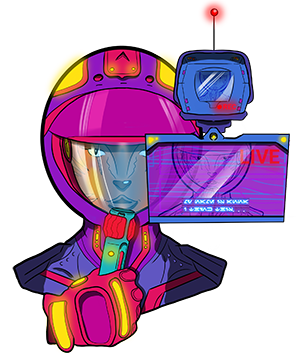The gaming industry has evolved beyond entertainment; it now serves as a social and cultural hub for millions of people. And although gaming is booming, inclusion remains a challenge, with marginalized communities often facing representation gaps or barriers to accessibility. This blog will explore how the industry is progressing toward inclusivity, what challenges still exist, and why inclusive gaming benefits everyone.
Why Inclusion in Gaming Matters

When players see a sliver of themselves in a character, a cultural reference, or an accessibility feature, they form a stronger emotional connection to the game and engage with it more. But it’s not just marginalized communities that are drawn in by efforts to make games more inclusive. Numerous studies, including this literature review by the Geena Davis Institute, have found that these efforts drive innovation in gaming and games that intentionally create diverse, multidimensional characters with unique storylines are more interesting and attractive to players of all backgrounds.
Hellblade: Senua’s Sacrifice is just one example. Senua, the protagonist of this critically acclaimed and wildly popular game, is a gritty but psychologically disturbed warrior princess, whose depth and complexity appeal to a wide audience, and especially to women, who are growing increasingly tired of the unrelatable, hyper-sexualized female characters in other games. And while examples of games that feature inclusive characters, accessibility-first design and accurate cultural representation are getting easier to spot, there are still many barriers to the development of inclusive games.
Challenges to Inclusive Game Development
One of the main barriers to inclusive game development is the lack of diverse talent in the industry, which naturally affects representation in storytelling. As an example, women make up almost half of all gamers worldwide, but they hold only around 30% of gaming industry jobs. Even then, employers rarely place women in leadership and technical roles, where they would have influence over how women will be portrayed in video games, if they are even included at all.
Another barrier to inclusion is inadequate attention to how game mechanics and UI influence the experiences of players with disabilities or specific needs. Games that require rapid inputs or rely mostly on audio or visual cues without providing alternatives may alienate and exclude players with motor disabilities or audio or visual impairments.
Finally, issues with localization and cultural adaptation can rub audiences the wrong way and pull them out of the immersive gaming experience. Localization that is incomprehensible, clunky or just not targeted enough may cause players to feel unseen and jump ship. And poor cultural adaptations, such as the perpetuation of harmful stereotypes, can generate not just indifference but animosity towards a game.
What the Gaming Industry is Doing to Improve Accessibility and Inclusion

Despite the persistence of barriers to inclusion and accessibility, efforts to remove them are more sincere and visible than ever before. There is a growing understanding in the industry that addressing these barriers is central to growing the player base, so publishers are investing in DEI because there is not only a moral imperative to do so but also a good business case for doing so. A rise in inclusion-focused gaming organizations, such as AbleGamers and Women in Games, is helping to bring lived experience and nuance to the conversation about inclusion and to support people from marginalized groups who want to get into the industry.
Developers continue to make accessibility improvements, as seen in the latest Game Awards winner, Prince of Persia, which provides an innovative mapping tool that makes the game more fun and accessible for people with certain disabilities, such as aphantasia. To assist them in their efforts, some developers have created online platforms and communities to solicit user feedback on accessibility features. Strides are also being made in game localization, which is adding more defined layers of review to ensure cultural accuracy and relatability.
The Takeaway
Inclusion in gaming is not just about doing the right thing; it drives engagement, player retention, and long-term success. Game developers must take a proactive approach to designing inclusive content, UI, and gameplay. And by working with diverse talent and accessibility consultants, studios can ensure truly inclusive gaming experiences.



